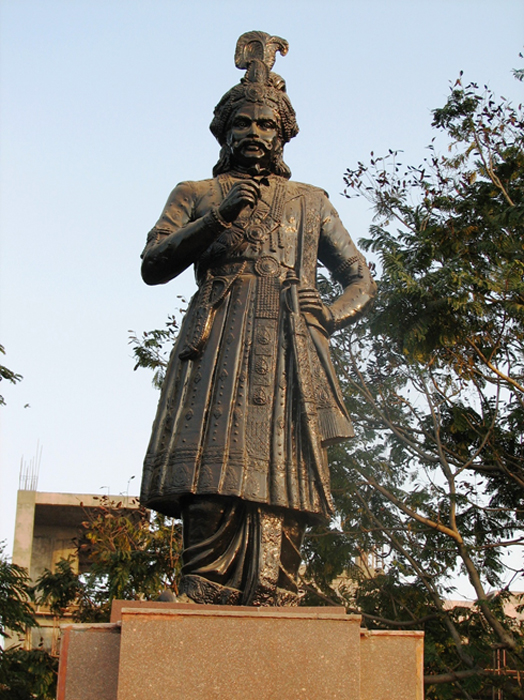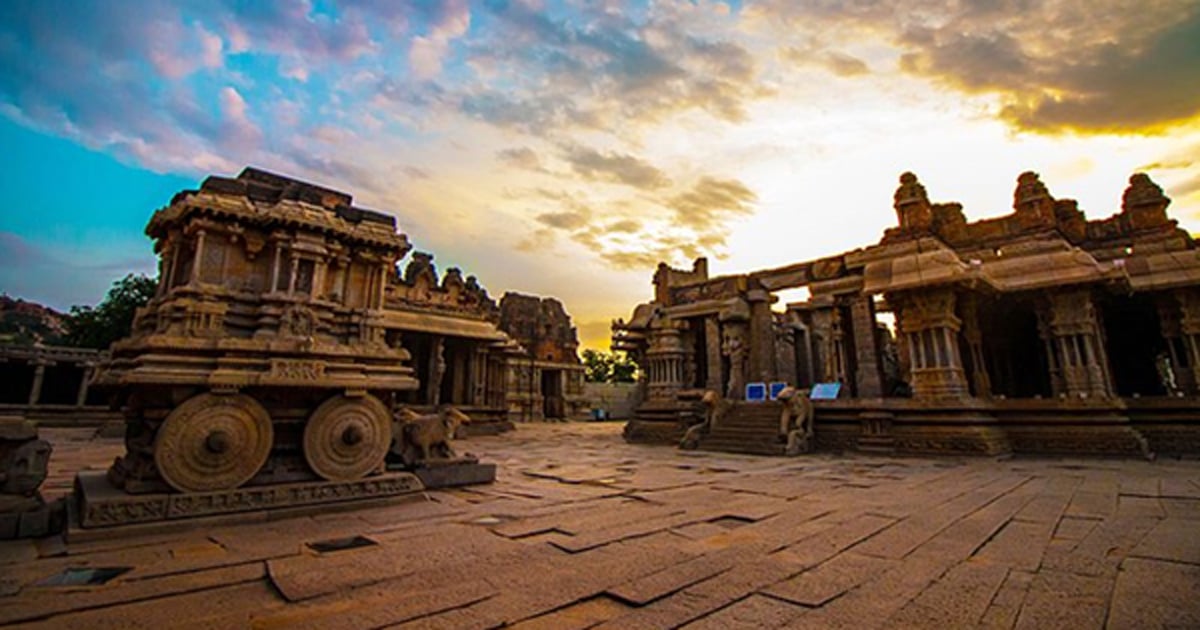The Vijayanagara Empire: Friendly and Feuding Brothers Who Ruled the South of India
For a time, there was a strong divide between political rule in the north and south of India. While the northern part of India was under the rule of the Muslim Delhi Sultanate, the south withstood the change and was ruled by the Vijayanagara Empire instead.
The Vijayanagara Empire was a Medieval Indian empire that was based in the Deccan Plateau of southern India. This empire was founded during the 14th century and lasted until the 17th century. It derived its name from its capital, Vijayanagara (which occupied the modern site of Hampi, and is today a UNESCO World Heritage Site), which is Sanskrit for ‘City of Victory’.
Founding Brothers - Rulers of the Vijayanagara Empire
This empire was founded by two brothers, Harihara Raya I and Bukka Raya I, whose father was Bhavana Sangama. As the brothers were the first two rulers of the Vijayanagara Empire, the dynasty they established was known as the Sangama Dynasty.
During the 1330s, the Muslim Delhi Sultanate was at its vastest territorial extent, following the military campaigns of Muhammad bin Tughluq. Although the Delhi Sultanate was successful in conquering most of the Indian subcontinent, administering the area was a much more difficult task.
- The Extensive and Sometimes Mythical History of the Chola Empire
- Beautiful Dynastic Artistry Shaped the Face of Modern India
- Mahmud of Ghazni: Merciless Tyrant Obliterated Hindu Temples and Conquered Territories Through Plunder and Slaughter
In the south, Harihara Raya I and Bukka Raya I seized the opportunity to declare their independence from the Muslim overlords in Delhi, seeing that the sultanate had overstretched its resources. They were inspired and supported by the Hindu saint Vidyaranya, who urged them to fight against the Muslims in the south of India.

Vijayanagara Empire royal insignia: boar, sun, moon and dagger. (Pratheep P S/CC BY SA 3.0)
In the following decades, the rulers of the Vijayanagara Empire pursued an expansionist policy through military conquest. The first emperor, Harihara Raya I, for instance, conquered most of the area to the south of the Tungabhadra River, and received the title Purvapaschima Samudradhishavara (which means ‘Master of the Eastern and Western Oceans’).
The second emperor, Bukka Raya I, continued his brother’s policy, and his conquests include the area around Penukonda, the Tungabhadra-Krishna doab, and Goa. It was also during Bukka Raya’s reign that the capital of the Vijayanagara Empire was moved from Anegondi, on the northern bank of the Tungabhadra River, to Vijayanagara, on the river’s southern bank. This location was more secure, and easier to defend.

Tungabhadra River, Hampi (Vijayanagara). (Dey.sandip/CC BY SA 3.0)
Fighting to Hold On
Indeed, the Vijayanagara had to face many enemies, who seized the opportunity to attack them during the early part of the 15th century. In 1404, the successor of Bukka Raya I, Harihara Raya II, died, and a succession crisis ensued.
The third emperor was first succeeded by one of his sons, Virupaksha Raya, who was killed by his own sons after reign of just months. During this short period of time, the Vijayanagara Empire lost much territory to the Muslims, as the empire, led by a weak emperor, was unable to defend its lands.
He was then succeeded by one of his brothers, Bukka Raya II. After ruling for two years, he was overthrown by another brother, Deva Raya I. The new emperor reigned for about 15 years, but the empire was on the defensive now, as it was continuously attacked by neighboring powers, including the Velamas of Telangana, the Reddis of Kondavidu, and the Gajapatis of Orya.

Natural fortress at Vijayanagara. (Dineshkannambadi/CC BY SA 3.0)
Deva Raya II, who ruled from 1424 to 1446, was able to halt the decline of the empire for a while, though his successors were less capable, and the Vijayanagara Empire continued to crumble.
In 1485, a military coup was launched by the general Saluva Narasimha Deva Raya, and Praudha Raya, the last ruler of the Sangama Dynasty, was overthrown. A new dynasty, the Saluva Dynasty, was established, which lasted until 1505.
The Saluvas did not have an easy time, as the empire’s enemies continued their attacks, and numerous rebellions and uprisings took place. Eventually, this dynasty came to an end when Tuluva Narasa Nayaka, who served as regent to the last Saluva ruler, seized power for himself in 1505.
- Five of the Most Powerful and Influential Empires of the Ancient World
- The Rise of Chandragupta Maurya, and the Golden Age of the Mauryan Empire
- The Controversial Indian Caste System Has Been Dividing India for 2000 Years
It was under the Tuluva Dynasty that the Vijayanagara Empire reached its peak, especially during the reign of Krishna Deva Raya, the most famous ruler of this dynasty. Following his death in 1529, however, the Vijayanagara Empire began to decline once more.

Bronze statue of Krishna Deva Raya. (Public Domain)
The Fall of the Vijayanagar Empire
In 1565, the Vijayanagara Empire suffered its worst military defeat at the Battle of Talikota, during which they fought against an alliance of five Deccan sultanates. The military might of the Vijayanagara Empire was shattered, its capital plundered and razed to the ground, and the regent, Tirumala Deva Raya, fled to Penukonda with an impressive amount of treasure.
Following the death of the last Tuluva ruler, Sadashiva Raya, in 1570, Tirumala Deva Raya established his own dynasty, the Aravidu Dynasty. This dynasty lasted until 1646, though the empire never fully recovered from the defeat at the Battle of Talikota. The Vijayanagara Empire ended when it was conquered by the Sultanates of Bijapur and Golkonda. Nevertheless, the major vassals of the empire took the opportunity to declare their own independence, resulting in the division of southern India into numerous small states.

Battle of Talikota. Hussain Nizam Shah I and the coalition of Deccan Sultanates decisively defeat and execute Aliya Rama Raya. (Aftabi/CC BY SA 4.0)
Top Image: Stone temple car in the Vitthala Temple at Hampi. (Vijayanagara). Source: Hawinprinto/CC BY SA 4.0
By Wu Mingren
References
Explore Hampi, 2015. Rise of the Vijayanagara Empire and its Capital City. [Online]
Available at: http://explorehampi.com/rise-of-vijayanagara-empire/
Kessler Associates, 2018. Vijayanagar Empire. [Online]
Available at: http://www.historyfiles.co.uk/KingListsFarEast/IndiaVijayanagar.htm
Nag, O. S., 2017. Hampi - Unique Ruins Of The Vijayanagara Empire. [Online]
Available at: https://www.worldatlas.com/articles/hampi-unique-ruins-of-the-vijayanagara-empire.html
New World Encyclopedia, 2016. Vijayanagara Empire. [Online]
Available at: http://www.newworldencyclopedia.org/entry/Vijayanagara_Empire
Pillalamarri, A., 2015. 450 Years Ago, This Battle Changed the Course of Indian History. [Online]
Available at: https://thediplomat.com/2015/06/450-years-ago-this-battle-changed-the-course-of-indian-history/
The Editors of Encyclopaedia Britannica, 2017. Vijayanayagar. [Online]
Available at: https://www.britannica.com/place/Vijayanagar




















Comments
From time immemorial North and South were ruled by very distinct cultures and rulers.